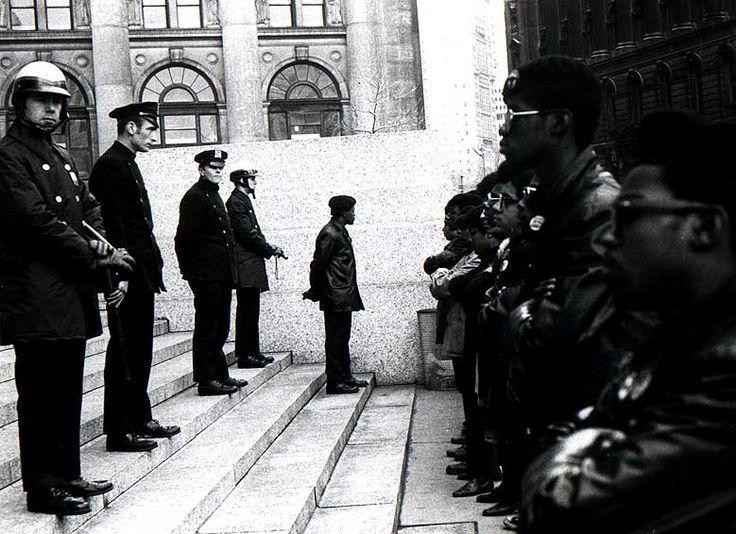

This is reposted from comrades at The Decolonizer. Original post here.
The police watch is an organized (sometimes armed) group of grass-roots community members who take-up the responsibility of observing the the police in action. Where all other systems of police accountability fail, the police watch carries out face to face encounters with the police in order to record their behavior and hopefully deter them from brutalizing, harassing, and murdering people.
When The Black Panther Party first emerged in 1966 it was most known in the Black community for the Panther Patrols. These patrols consisted of anywhere from three to six people who would follow the police on Friday and Saturday nights and observe them in their actions. Panthers brought with them at least one camera, a law book, a tape recorder, and a few loaded guns. Beyond its practical function, police watch groups work really well in conjunction with anti-police campaigns. Information attained from observing local police activity can be used to build a case for eliminating police occupation of communities.
As with the Panthers, an armed police watch group can inspire more armed resistance within the local community. Police watch groups in cooperation with grassroots alternatives to policing can make police in the area obsolete. In fact, for a time in Oakland, CA the Panther Patrols did become the alternative and many people called on the Panthers to settle domestic disputes. Monitoring the police is still a very dangerous undertaking, especially when arms are involved. Even when you are perfectly within the law, your life will always be in danger. Never form a police watch if you are not prepared for the risks.
Step 1: Study the Law
Before setting up any watch group you must first study the laws of your state or country carefully. Your rights to observe a police officer may vary depending on where you live. In the United States the constitutional right of free assembly ensures that anyone may observe a police officer when they are a reasonable distance away. A “reasonable” distance is considered far enough away that you do not physically interfere with an officers work. Ten feet is probably doable. Even so, an officer may still try to arrest for obstruction of justice. In open-carry states you can still observe a police officer with a gun as long as the gun is visible. You have a right to take pictures and film any officer as long as the device is visible. Knowing the law will not save you form police violence but is still helpful should you be arrested.
Step 2: Form Your Group
Form a group of like-minded individuals who are serious and understand the risks involved in observing the police. They should be people who can be trusted and can grow to trust each other. The members should have a working knowledge of the laws regarding a persons right to observe the police or be open to learning. It is very important for your group to be made up of members who actually live in the area. A grassroots police watch will have more popular support from the community and will directly involve them in the monitoring of police. Decide if the group will be armed.
Step 3: Training
Anything could happen when a police officer is watched and feels threatened. While you and your group may not be prepared for every situation that arises it is still very important that you walk through the possibilities in detail so that all members know what to do. If possible try setting up a police watch training or teach-in where situations can be reenacted and scenarios can be worked out as a group. Keep in mind that some of the most dangerous situations are when a officer draws their weapon on a group member or calls for back-up.
Step 4: Popular Support
Remember that the community who is being policed should be involved at every level of this process. They should be among your ranks as well as the body that holds your group accountable. Organize a community forum in which you announce the police watch group and its objectives to the people. Outline how the community will hold the police watch accountable. There should be a phone number or main contact available so that the people can call on the watch when necessary. Collect email and contact information so that your group can communicate with the people. Set up a database system so all information collected from police observations is made available to the people. Finally, schedule future meetings where your group reports back to the people.
Step 5: Setting Up The Watch
Before you venture out as a group to conduct watch activities you will first want to set up a bail-out system. The chances of you or any member of your group being arrested by the police is extremely high. Having everyone contribute to a bail fund before hand will ensure that you can get your members out of prison as quickly as possible. Set up a schedule when the watch is active and decide on areas where the watch will be located. If your group is big enough divide the members so that no less than three are active in a given area. Four or five people is more preferable.
The Decolonizer
Länk: http://www.thedecolonizer.com/how-tos/2016/10/31/how-to-organize-a-police-watch